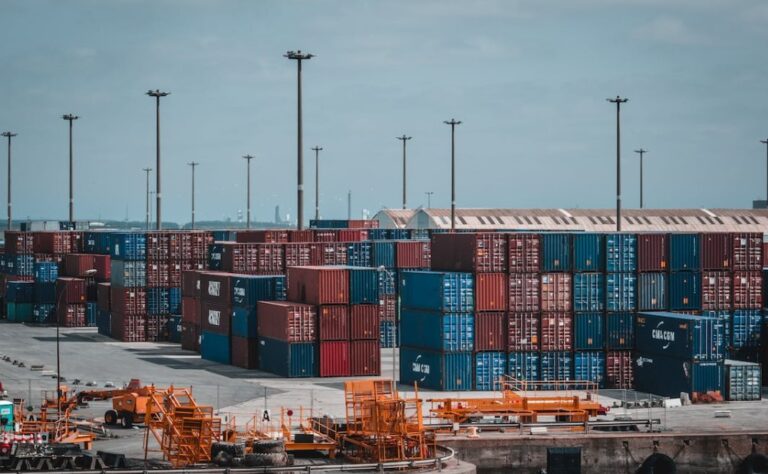The so-called Middle Corridor, that is, the shorter infrastructure axis between China and Europe that, designed and financed also with Chinese capital in the framework of the Belt and Road Initiative, is now a reality. It represents the more sustainable alternative to the Northern Corridor, which, in addition to being longer, has the cursed defect of passing through Vladimir Putin’s Russia.
Table of Contents
Central Asia hinge between Asia and Europe
Not as of today, Central Asia is at the center of the interest of the great powers and economic actors in its quality of “indispensable hinge connecting Europe and China, but also towards all of East Asia.”
The event that changed the landscape not only in the region was the war in Ukraine, which pushed Central Asian countries away from Moscow and its war choices.
But it was particularly Western sanctions on Russia that forced economic operators around the world to find alternative routes for their trade by giving up Russia as a transit country along the East-West route.
As gazes are pinned on them, the former Soviet republics of Kazakhstan, Turkmenistan, Azerbaijan, Uzbekistan and Kyrgyzstan are simultaneously trying to reduce their strategic and economic ties with Moscow and seek an alternative source of their own economic growth.
What is the Trans-Caspian International Transport Route
The instrument through which to pursue these goals from an infrastructure perspective is the Trans-Caspian International Transport Route (TITR), better known as the Middle Corridor.
Designed in 2013 as an integral part of the Belt & Road Initiative (BRI), TITR became a reality three years later. Then, the participants in the Coordinating Committee for the development of the route-Kazakhstan, Azerbaijan, Georgia-decided to establish the Trans-Caspian International Transport Route Association, with the participation of transport trade organizations.
The ultimate design was to create a corridor connecting Europe and China through Georgia, Azerbaijan, the Caspian Sea, and alternatively Kazakhstan or Turkmenistan, Uzbekistan, and Kyrgyzstan.
Intertwined projects
There are two most important recent infrastructure developments in the Middle Corridor. On the one hand, there is the Trans-Kazakh railway. Which, completed in 2014, has enabled the creation of an East-West transport axis of about 1,000 kilometers.
The project enjoys $2.7 billion in support from the European Bank for Reconstruction and Development (EBRD) and also has specific funds from the Asian Development Bank and the Islamic Development Bank.
The second initiative has two faces. That of upgrading the Centre-East Road Corridor between Nur-Sultan and Ust-Kamenogorst, and that of the Centre-West Corridor in the Shalkar and Kandyagash section. The idea is to make Kazakhstan the major communication route between the Caucasus and the West across the Caspian.
Kazakhstan’s role
Attention has lately focused on Kazakhstan in light of the multiplication of memoranda of understanding between major logistics companies and state railways for new investments aimed at increasing the capacity of the transport route.
Then last year saw the start of the expansion of the Port of Aktau, with the construction of a container terminal to be completed by 2025 and a financial effort in which the EBRD is also participating.
Finally, in June 2023, the Seaport Aktau Special Economic Zone was created, with the aim of strengthening transportation and logistics in the country and attracting further private investment in infrastructure upgrades.
Read also: Here’s how Russia and China gas themselves with LNG in the Arctic
The Baku-Tbilisi Railway
Propaedeutic to the completion of the Middle Corridor was the construction of the Baku-Tbilisi-Kars (BTK) railway, which paves the way toward connecting with Turkey or, alternatively, the Black Sea.
Completed in 2017, the railway today is undergoing strengthening works, with Azerbaijan deciding to invest an additional $100 million to increase the capacity of a line that marked a 30 percent increase in transported volumes in 2022 compared to 2021, with numbers set to increase.
The fastest route between China and Europe
It is thanks to the fervor and proliferation of these infrastructure initiatives that the Middle Corridor today has established itself as the shortest and fastest route between China and Europe.
Compared to the Northern Corridor’s 10,000 km and 15 to 20 days of travel time, the Middle Corridor is in fact 7,000 km in length and 10 to 15 days of travel time. Moreover, the alternative sea route passing through the Suez Canal dilutes distances and times even more: about 20,000 km and 45 to 60 days.
Thus, it seems destined to inexorably change the disparity in the use of the two routes, which still in 2021 saw the Middle Corridor transporting between Asia and Europe a volume of only 8 percent of the Northern Corridor’s volume.
There is no shortage of signs that this profound transformation is underway, given by the growing interest shown by major international logistics companies-Danish Maersk, Finnish Nurminen Logistics, Dutch Rail Bridge Cargo, German CEVA logistics, Azerbaijani ADY container, and a group of Chinese logistics companies-that since the outbreak of hostilities have taken to using the Middle Corridor as a more sustainable alternative.
Read also: This is how China throttles Africa: all about the BRI “debt trap”












